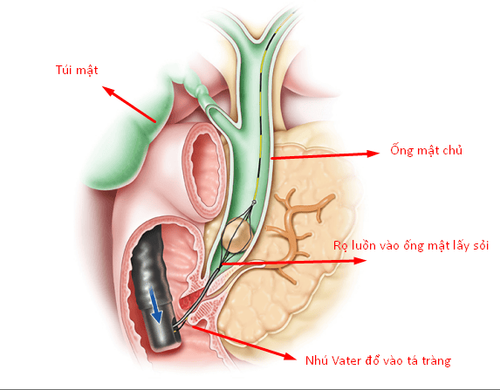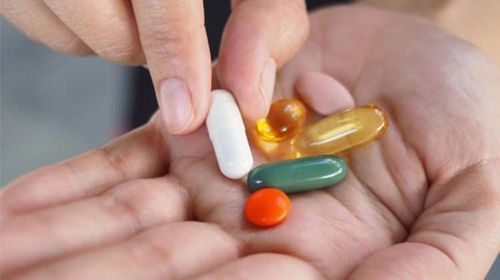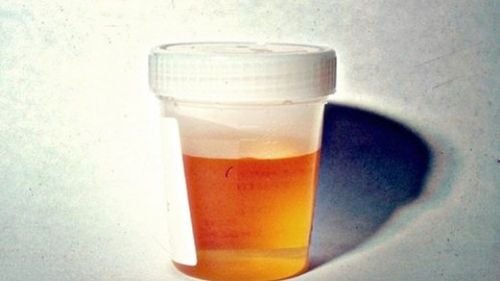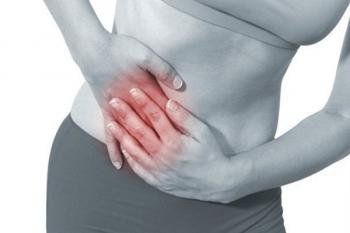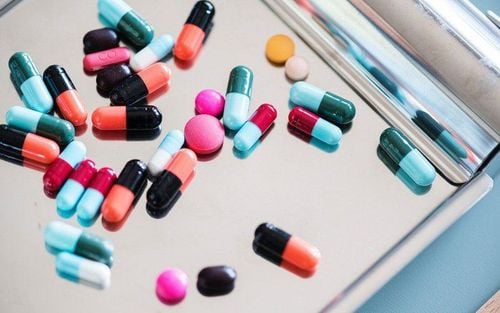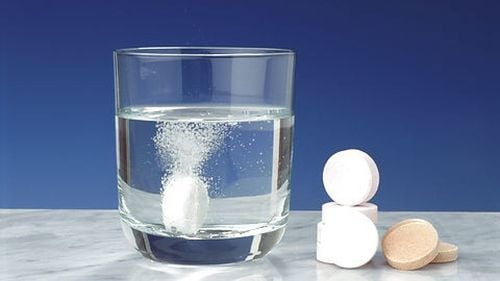This is an automatically translated article.
The article was professionally consulted by Doctor Department of General Surgery and Anesthesia, Vinmec Hai Phong International General Hospital.
Percutaneous lithotripsy is less painful, highly effective, has few complications as well as less kidney damage. However, after lithotripsy, you should still maintain a reasonable diet to avoid recurrence of kidney stones later.
1. Kidney stones and percutaneous renal lithotripsy
1.1 What are kidney stones? Kidney stones are small or large up to a few centimeters. If the kidney stone is small, it can be pushed out through the urine and the patient does not need to worry.
But in the case of large stones, it is possible to fill the renal pelvis and the tubes that carry urine from the kidney to the bladder. Or with their large size, they move and rub against the urinary tract, which can cause back pain and blood in the urine.
Kidney stone disease can block the urinary tract, back up urine, cause inflammation, long-term will lead to fibrosis of the urinary tract. At the same time, reducing urinary contractile function causes fistulas in the bladder and ureters, causing kidney failure. This is a dangerous complication after having a kidney stone that the patient should not ignore.
1.2 Manifestations of people with the disease Abdominal pain at the midpoint of the ribs with the hip area or pain at the hip point, pain at the mid-back point. Severe pain accompanied by feeling nauseous, possibly vomiting. Painful urination, foul-smelling urine or bloody urine Obstructive urinary tract: feeling that there are times when it is difficult to urinate, possibly completely blocked. Urinary purulent, bloody: when the urinary tract is infected, more than that repeated many times will appear blind or bloody urine, and especially may come out with stones. High fever: high fever accompanied by chills, pain in the hips and back, painful urination, frequent urination, and pus are symptoms of a person who has stones and is at the level of acute nephritis.
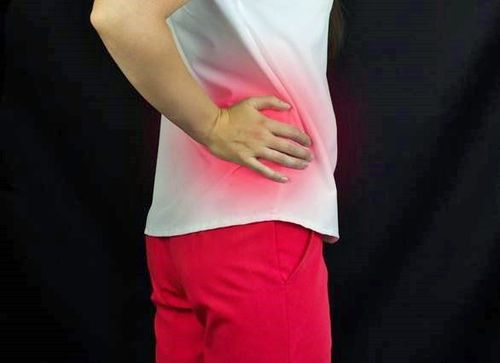
2. Percutaneous kidney stone lithotripsy
Endoscopy percutaneous lithotripsy is an endoscopic method for the treatment of kidney stones and also ureteral stones. After the patient is under general anesthesia, the surgeon inserts a needle through the skin of the back into the kidney.
The tunnel of the puncture needle will be dilated with dilators to achieve the size of the body of a pen, thereby allowing insertion into the laparoscopic lithotripsy. The gravel will be crushed to pieces and at the same time sucked out.
Then, also through the tunnel, insert a renal catheter for post-operative examination - this catheter will be removed after 24-48 hours. In some cases, extracorporeal lithotripsy may be necessary to remove any remaining stone fragments.
2.1. Indicated cases to perform percutaneous nephrolithiasis Criterion to help doctors decide on percutaneous nephrology is based on imaging. The UIV film is the first choice, the image on the film will allow the doctor to accurately identify the size, shape, location of the stone and especially the anatomical shape of the renal pelvis and renal parenchyma. In necessary cases, the doctor may ask the patient to have a CT scan or an ultrasound during surgery. The endoscopic percutaneous lithotripsy method is specifically applied:
Stones larger than 2cm, including complex coral stones In case of failure of extracorporeal lithotripsy. Laparoscopic percutaneous lithotripsy is not suitable for patients with coagulopathy, or with abnormalities in blood vessels in the kidney, at risk of severe bleeding. Even with cases of high blood pressure, the contraindication is only temporary.
2.2. Percutaneous lithotripsy is highly effective, less painful, less complications Today, medicine has developed with many different methods of treating kidney stones more advanced and modern, one of which is percutaneous renal lithotripsy. Operating on the principle of applying shock waves to the outside of the body, through the skin to the inner kidney, identifying and focusing on the stone, using relatively large pressure to break the stone, the fragments will through the urinary tract.
Advantages of endoscopic percutaneous lithotripsy:
Mild surgery, minimal pain, short treatment time (within 1 hour), short hospital stay (about 3-4 days) Fast recovery for health and quick return to work (7-10 days) Avoid surgical scars for the patient, which means avoiding the risks of complications if surgery with a large incision to get into the kidney gravel. Completely fix the remaining stone condition. This is a very special advantage in endoscopic percutaneous lithotripsy due to its ability to allow the entire renal pelvis and ureter to be examined. But with conventional surgery and percutaneous lithotripsy, it is not always possible to control the condition of remaining stones. Minimize postoperative infection compared to conventional surgery. Less damage to the kidney (percutaneous endoscopic lithotripsy affects less than 1% of renal function, so surgical methods of stone removal make a large incision in the kidney tissue, which can greatly affect the kidney function). more than 30% of kidney function later on.

3. How is percutaneous renal lithotripsy performed?
The procedure to perform percutaneous lithotripsy includes 3 steps:
Step 1: The doctor begins to give anesthesia to the patient, general anesthesia or possibly pre-anesthesia analgesia for the patient lying on the machine. gravel.
Step 2: Place the shock wave emitter on the patient's back adjacent to the corresponding stone location.
Step 3: Through the positioning X-ray, the doctor will conduct lithotripsy by emitting pulses of the machine. The focused pulse wave will precisely focus on the pebble and disperse the pebble.
The whole process will take a period of 1 hour and not exceed 3000 pulses, the purpose is to ensure the safety of the kidney tissue.
Note: The stone will always move with each breath, so the patient being treated must keep a deep breath. Otherwise, the pulse wave after delivery may not reach the right stone, which will increase the percentage of stones in the renal tissue and the stone dissolution efficiency will be reduced.
Percutaneous renal lithotripsy applies a focused shock wave source to break up the stone. The effect will depend on:
The power of the diffuser as well as the solidity and size of the stone through X-ray. Location of stones in the body: Stones located in the calyx or renal pelvis will be easier to break down successfully than stones in the ureter. Distance of wave impact from the skin to the center of the stone: the longer the distance, the longer and more difficult the distance to stimulate the dispersal. Ureteral clearance: Complete. Fragments of the stone will be excreted through the ureter. Therefore, the function of passing urine easily, the rate of stones out of the body completely will be higher. The doctor will also rely on this factor to determine whether to perform percutaneous lithotripsy or not.
4. What to do after percutaneous lithotripsy
Is it painful to finish lithotripsy? After the lithotripsy is performed, the patient will feel a slight back pain and some red blood in the urine, the doctor will prescribe more drugs to help stabilize this situation after the lithotripsy.
Patients should increase mineral water every day, because this will help the urinary tract to eliminate kidney stones will become easier. After 1 month of treatment, the effectiveness assessment will be most accurate.
If there is a strange phenomenon such as fever or experiencing painful cramps in the kidney area, you should immediately go to the nearest medical facility specializing in urology for examination and timely treatment.
5. To avoid recurrence of kidney stones, what should be done?
In fact, the number of patients after treatment for kidney stones has up to 20% risk of recurrence later. The main cause of the recurrence of kidney stones lies in the daily lifestyle and diet. You should take careful precautions to avoid recurrence in the future:
5.1 What should I eat after Lithotripsy? Eat foods that are diuretic and easy to digest. Diet and diuretic intake will have the effect of excreting debris, small stones, blood fluid, blood residue, visible components on the kidneys and ureters through the catheter down to the bladder, urine out. Diuretic foods: Celery, orange or lemon juice, vegetables, beets, boiled young corn juice or corn silk juice, black bean juice (no sugar or low sugar)... Easy-to-digest diet The chemical helps the patient to quickly absorb to recover health, heal the damage to the mucosa - ureteral wall. Of course, the diet avoids constipation, helping the patient to pass stools to avoid straining. Thereby reducing abdominal pressure when defecating will avoid impact on the ureter, into the bladder touching the catheter should limit pain and hematuria. Foods that are easy to digest: sweet potatoes, spinach, sweet potatoes, jute vegetables, spinach, tofu, bananas, cauliflower,... Drink a lot of water and do not hold urine: Drink 2 hours a day, 5 - 3 liters of water, need to urinate as soon as there is a need, it is best to train the appropriate biological clock to avoid holding urine. Can add water mixed with tapioca starch, black bean juice, or cool fruit juice, which can help eliminate calcium. 5.2 Kidney stones should not eat? Minimize diets high in oxalates and calcium. Foods to limit: Shrimp, crab, seafood. Drinks should be limited: condensed tea, coffee. Limit pork intestines or dishes made from animal brains... this is a food source that is easy to cause kidney stones. Should listen to the doctor's prescription to add some drugs to control the mineral ratio of urine. A diet and drink with antibacterial substances will help enhance the effectiveness of antibiotics. After the end of oral antibiotics, these “vegetal” antibiotics are useful against retrograde infections caused by ureteral catheters. Natural antibacterial foods: onions, chives, garlic, ginger, honey, turmeric, cabbage... Percutaneous lithotripsy is an advanced technical method, creating a great revolution in the treatment of stones. kidney, urinary stones. The method of percutaneous lithotripsy is minimally invasive and traumatic, it has been popularized and widely applied in order to avoid open surgery and still be able to successfully disperse kidney stones from afar.
Urology Department at Vinmec Times City International Hospital is currently applying percutaneous renal lithotripsy and treatment of urinary tract stones with the most advanced new generation machine. The machine is equipped with a computer control panel, a digital display, besides combining electro-optical - ultrasound, which helps to accurately locate the position of the gravel with three-dimensional 3D space. The source provides a shock wave system with relatively large power, making the percutaneous lithotripsy effective and highly successful. The modern imaging system, flexible endoscopic system, and qualifications from a team of experienced doctors in lithotripsy can bring the best results to limit complications during and after surgery.
Please dial HOTLINE for more information or register for an appointment HERE. Download MyVinmec app to make appointments faster and to manage your bookings easily.




